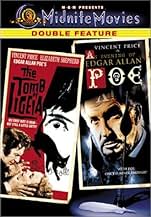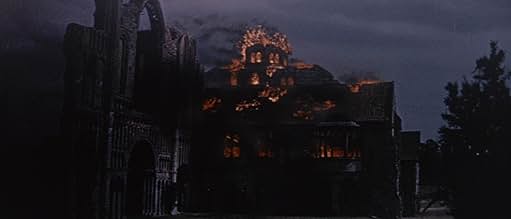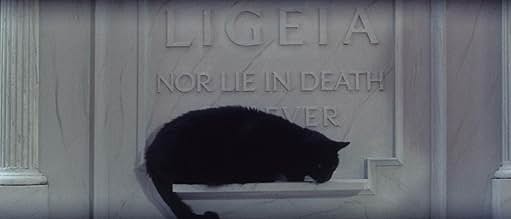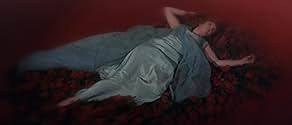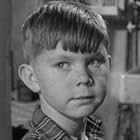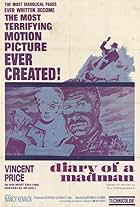IMDb RATING
6.4/10
7.2K
YOUR RATING
A man's obsession with his dead wife drives a wedge between him and his new bride.A man's obsession with his dead wife drives a wedge between him and his new bride.A man's obsession with his dead wife drives a wedge between him and his new bride.
- Director
- Writers
- Stars
Maxwell Craig
- Wedding Guest
- (uncredited)
Anthony Lang
- Wedding Guest
- (uncredited)
Del Watson
- Footman
- (uncredited)
Fred Wood
- Wedding Guest
- (uncredited)
- Director
- Writers
- All cast & crew
- Production, box office & more at IMDbPro
Featured reviews
There is an assumption among movie fans that the longer a movie series exists, the worse the later films will be. Although the films Roger Corman made of some of the stories of Edgar Allan Poe began well and continued with no obvious sense of decline, it is my opinion that the best was kept for last. The most overtly spectacular film in the series was 'The Masque of the Red Death' with its fine sense of colour and effective sense of homage to Ingmar Bergman's 'The Seventh Seal'. I have always enjoyed this film and in terms of a deliberate departure from the series norm, it is exceptional. However one enjoys any series for the familiar as well as the unusual, and in this respect 'The Tomb of Ligeia' is the most memorable for me in the way it builds upon and enhances what has gone on in previous films. The logical departure from the previous films which had been (very happily and effectively) studio-bound, was to move to location. Corman's choice of Castle Acre Priory in Norfolk, was an inspired one. An large amount of location filming was done there and this grounded the film in a realistic (yet unusual)setting. Gone were the fog machines and 'blasted heath' effects of 'House of Usher' and 'The Premature Burial'. Many critics have mentioned their disquiet at the absence of Barbara Steele, at that time undoubtedly the actress most associated with this type of picture. Wonderful though Miss Steele was in, say, the last thirty minutes of 'The Pit and the Pendulum', I feel that the presence of the English actress, Elizabeth Sheppard, adds to the sense of realisim, while taking little away from the shock effect of one actress playing both a good and an evil role. Roger Corman is on record as saying that he had to keep a written record as to when Rowena was herself and when she was Ligeia. All I can say that it is happily obvious on the screen when each side of the romantic coin is in evidence. I think that Elizabeth Sheppard's performance, grounded in reason, and when added to the inevitable polish that was being obtained by this stage in the series, showed a welcome extra sense of belief, to point out the advances and progression that had been made by this, the last film, in the series. Two scenes stand out : the entrapment of Rowena in the bell tower by the black cat (representing Ligeia.) I am also very impressed by Rowena's hynotism ; first to her own childhood and then to the persona of Ligeia. This film has not been available for viewing in the UK for many years. It is to be hoped that this situation will be reversed before long. I remember with affection the moment when great talents (from both sides of the 'pond') collaborated with great effcetiveness to come up with the ultimate 'Corman Classic'.
Well, at least for a little while! His last of eight Poe films as director is (loosely) based on the Poe work of the same name and is a solid metaphorical ghost story. Lady Rowena (the wonderful Elizabeth Shepherd) falls in love with Verden Fell (Vincent Price) despite his strange behavior and questionable past. Soon after their marriage, he starts disappearing, she's menaced by that old Poe stand-by (the evil black cat) and plagued by horrific nightmares involving Verden's deceased former wife Ligeia (also played by Shepherd), whose ghost seems intent on ruining the union. Price, in top hat and strange sunglasses in many scenes (his vision being "dangerously acute"), seems a bit too old for the role, but still manages to come through with an effective performance. Corman has always been underrated for effectively capturing period detail on a limited budget and it's his keen eye for the crumbling ruins, lush green countrysides, oceanfronts and shadowy castle corridors that make much of this film work. Screenplay by future Oscar-winner Robert Towne (CHINATOWN). LIGEIA was Corman's last horror film as director until 1990's FRANKENSTEIN UNBOUND.
Very fine Poe adaptation. I had always reckoned Masque of the Red Death, from the same period to be far superior, but not so. Viewed again this is very well put together, especially the first half, which is really only setting the scene for the Poe tale to be told. Not quite as stylish as the aforementioned film, this is still, nevertheless, possessed of a very strong dream like quality and builds scarily as doors rattle, animals squawk and the inevitable black cat scrambles, leaps and screeches. Wonderful setting of Castle Acre Priory helps give the film greater authenticity and Corman mixes the Shepperton Studio interiors well with the beautiful Norfolk countryside and the marvellous grandiose priory remains. I don't know why the tomb of the title had to be so shining white and new looking but never mind, a really good Corman outing with excellent performances from Price and the leading lady Elizabeth Shepherd, who regrettably seems to have otherwise worked almost exclusively in television. She has real presence here in a double role successfully mixing the seductiveness of Lady Rowena and the satanic steel of Ligeia.
"Ligeia" is one of my very favorite E.A. Poe stories, a masterpiece of suspense that doesn't reveal its secret until the very last word. Like a lot of Poe's stories, however, the transformation to the screen isn't always an easy one. A great deal of the action in the short story takes place in the narrator's head, and to make a feature length movie out of it there must be some added action and characters.
The screenwriter here, Robert Towne, would go on to bigger and better things and garner fame and awards while doing it. But this early script of his is a rather modest one. The action drags more and more as the film goes on and the sense of horror and tension dissipates rather than builds as the film progresses. Plus there's that annoying black cat (left over from another Poe story, perhaps?)
What points this movie does get are for style. Roger Corman wasn't a schlock director by any means; he had a great eye and and gave his films a distinctive look and feel. The cast is a very good one as well. Vincent Price does the usual fine job we expect from him and I liked actress Elizabeth Shepard as the Lady Rowena, Price's wife who succeeds Ligeia. I wasn't familiar with her before seeing this movie and I found her very watchable. But 'The Tomb of Ligeia' is hardly classic Poe or a memorable horror film. But fans of Corman and the Hammer Films type of productions may want to see it.
The screenwriter here, Robert Towne, would go on to bigger and better things and garner fame and awards while doing it. But this early script of his is a rather modest one. The action drags more and more as the film goes on and the sense of horror and tension dissipates rather than builds as the film progresses. Plus there's that annoying black cat (left over from another Poe story, perhaps?)
What points this movie does get are for style. Roger Corman wasn't a schlock director by any means; he had a great eye and and gave his films a distinctive look and feel. The cast is a very good one as well. Vincent Price does the usual fine job we expect from him and I liked actress Elizabeth Shepard as the Lady Rowena, Price's wife who succeeds Ligeia. I wasn't familiar with her before seeing this movie and I found her very watchable. But 'The Tomb of Ligeia' is hardly classic Poe or a memorable horror film. But fans of Corman and the Hammer Films type of productions may want to see it.
Amidst a crumbling castle in 19th century England, a widowed aristocrat (Vincent Price) mourns his wife, but quickly develops a new romantic relationship after meeting the forceful Rowena (Elizabeth Shepherd). Yet the soul of Ligeia seems to be haunting the estate and the apparently mesmerized Baron is hiding something.
Released in late 1964, "The Tomb of Ligeia" is Gothic horror based on the Edgar Allan Poe story from 1838 (which was revised in 1845 with the addition of his 1843 poem "The Conqueror Worm," written by the character Ligeia). This was the last of Roger Corman's eight Poe films from 1960-1964, which all made money but this one made the least, possibly because the quasi-series had run its course and the story was overly complicated. Nevertheless, Corman considered it one of the best of the lot.
Since the original tale was so short, scriptwriter Robert Towne incorporated elements from other Poe stories, such as the black cat, mesmerism and a hint of necrophilia. The talky story isn't as compelling as Corman's "The Terror" (1963) or even "The Masque of the Red Death" (1964). It's rather boring for the first hour, but there's an effectively creepy payoff in the last act, which ties everything together. Like those previous two films, the sumptuous Gothic ambiance is worth the price of admission and the inclusion of Stonehenge is a highlight. You just have to acclimate to the dated drama-focused goings-on.
The movie runs 1 hour, 22 minutes and was shot at Shepperton Studios, just west of London, and Castle Acre Priory north of Swaffham, as well as other spots in England, such as Stonehenge, Polesden Lacey and Polzeath, Cornwall, at the southwest tip of Britain (the beach scene).
GRADE: B-/C+
Released in late 1964, "The Tomb of Ligeia" is Gothic horror based on the Edgar Allan Poe story from 1838 (which was revised in 1845 with the addition of his 1843 poem "The Conqueror Worm," written by the character Ligeia). This was the last of Roger Corman's eight Poe films from 1960-1964, which all made money but this one made the least, possibly because the quasi-series had run its course and the story was overly complicated. Nevertheless, Corman considered it one of the best of the lot.
Since the original tale was so short, scriptwriter Robert Towne incorporated elements from other Poe stories, such as the black cat, mesmerism and a hint of necrophilia. The talky story isn't as compelling as Corman's "The Terror" (1963) or even "The Masque of the Red Death" (1964). It's rather boring for the first hour, but there's an effectively creepy payoff in the last act, which ties everything together. Like those previous two films, the sumptuous Gothic ambiance is worth the price of admission and the inclusion of Stonehenge is a highlight. You just have to acclimate to the dated drama-focused goings-on.
The movie runs 1 hour, 22 minutes and was shot at Shepperton Studios, just west of London, and Castle Acre Priory north of Swaffham, as well as other spots in England, such as Stonehenge, Polesden Lacey and Polzeath, Cornwall, at the southwest tip of Britain (the beach scene).
GRADE: B-/C+
Storyline
Did you know
- TriviaShot on a 25 day schedule in the UK, a big difference to the 15 day schedule used in the US for the previous Roger Corman "Poe" movies. The director attributed the extra time to the British crew's obsession with taking "tea breaks."
- GoofsPosition of Ligeia's arms when lying in bed. When Rowena fall on her her arms are in a position like holding something. Few minutes later, when Verden take a look on the bed hidden by the black curtains, their arms are in other position.
- Quotes
Verden Fell: Christopher, not ten minutes ago I... I tried to kill a stray cat with a cabbage, and all but made love to the Lady Rowena. I succeeded is squashing the cabbage and badly frightening the lady. If only I could lay open my own brain as easily as I did that vegetable, what rot would be freed from its grey leaves?
- ConnectionsFeatured in Nightwatch Presents Edgar Allan Poe: The Tomb of Ligeia (1973)
Details
- Runtime1 hour 22 minutes
- Color
- Aspect ratio
- 2.35 : 1
Contribute to this page
Suggest an edit or add missing content




